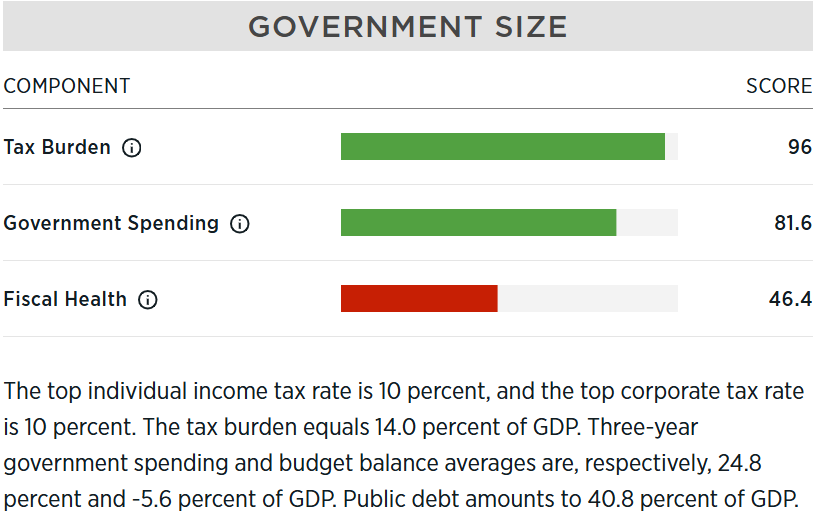When thinking about Latin America, most people immediately think of its giants: Brazil, Argentina, Chile, and Colombia. Big cultures, big economies, and a notable presence in international affairs. But a new player has been making increasingly prominent appearances on the global stage: Paraguay.
This small, landlocked country of nearly seven million people, located in the heart of South America, has historically been overlooked in international economics and diplomacy. Yet, despite its size and relative obscurity, Paraguay is beginning to crack the formula for economic success.
The World Bank’s September 2024 report, “Paraguay: From Landlocked to Land of Opportunity,” highlights this shift. Paraguay kicked off the year with the highest GDP growth in Latin America.
Fitch Ratings has also commented on the country’s recent growth. “Large investments support Paraguay’s economic diversification, which could help mitigate climate vulnerability,” it noted as it reaffirmed the country’s BB+ investment rating with a stable outlook. With nearly $10 billion in foreign investment in 2024 alone, 4.1% more than in 2023, it’s clear that international eyes are turning toward Paraguay. But how exactly is this small nation pulling it off? Three items in particular stand out.
1) Low Taxes
Paraguay understands the power of investment and trade, which is why it has embraced open markets and a low tax burden. The country applies the “10-10-10” model—referring to its 10% corporate tax, 10% personal income tax, and 10% value-added tax (VAT). This pro-business approach has made Paraguay the country with the lowest tax rates in South America, adding value to its market and attracting foreign investors.
Another standout policy is its territorial tax system, which imposes a 0% rate on foreign-sourced income—a major draw for remote workers and international entrepreneurs. On the export side, Paraguay has integrated the “maquila regime,” meaning that any product produced, packaged, or manufactured within its borders is exempt from export taxes.
With taxes accounting for just 14% of GDP, Paraguay recently earned a 96/100 tax burden score in the Heritage Foundation’s Economic Freedom Index—the highest in Latin America.


2) Open Markets
Paraguay has also embraced open markets, maintaining an average tariff rate of just 6.4%. Foreign investment faces no restrictive screening, and international entities are free to own property. Since 2008, the number of countries with direct investments in Paraguay has surged by over 50%, with the most significant investors being the United States, Spain, and Brazil—alongside growing participation from Chile, the Netherlands, Luxembourg, and Panama.
While agriculture and cattle ranching remain key pillars of Paraguay’s economy, international investments now extend far beyond these sectors. Capital is flowing into infrastructure, finance, renewable energy, transportation, creative industries, real estate, chemical products, and even startups. These developments are evidenced by the recent creation of PARCAPY (Paraguayan Association of Venture Capital).
Paraguay has grasped a crucial lesson: open markets, trade, and minimal regulation pave the way for growth. The results speak for themselves. According to REDIEX, the Paraguayan Investment and Export Network, 370 companies from diverse sectors entered Paraguay in just the first five months of 2024, a 130% increase compared to the same period in 2023.
3) Little Government Interference
According to the World Bank, Paraguay allocates just 3–4% of its GDP to public services—significantly lower than both the global and regional averages. In fact, the World Bank suggests that Paraguay would need to increase spending by 7% of GDP just to meet the so-called Sustainable Development Goals. Interventionists might see this as a crisis, but for those of us who value liberty, it’s a feature, not a bug.
Where the government is absent, or simply too inefficient to interfere, private initiative steps in. And as history has repeatedly shown, problems are solved far more effectively by markets than by bureaucrats.
A prime example is the energy sector. While countries with nationalized energy, like Bolivia, are plagued by fuel shortages and chemical adulteration, Paraguay has taken a different approach: allowing private ownership and distribution of oil. On top of that, it has embraced alternative energy projects, fostering an ecosystem of innovation. Companies like Cremer Oleo, Omega Green, and even cutting-edge ventures like BIT’s (Bolivian Industrial Technologies) pyrolysis plants, which convert plastic waste into usable oils, are thriving in Paraguay’s aspiring free market.
Areas for Improvement
Paraguay has made impressive strides in reducing government intervention and opening its markets, but institutional stability remains a major challenge. According to Red Liberal de América Latina (RELIAL), Paraguay ranks 103rd out of 174 in institutional quality. Sustained economic growth depends on clear and predictable rules and a stable legal and regulatory framework. This allows individuals to plan, innovate, and take risks, all essential institutional drivers of long-term prosperity.
Paraguay’s weakness in this area is evident in the Heritage Foundation’s assessment of Paraguay’s rule of law. The country falls below the global average in key areas like property rights, judicial effectiveness, and government integrity. A weak institutional foundation deters investment and slows private sector growth, ultimately threatening Paraguay’s economic momentum. If Paraguay wants to solidify itself as a true land of opportunity, strengthening its institutions should be its next priority.
The Stage Is Set for the Paraguayan Miracle
Paraguay is undeniably on the right path to success. With relatively open markets, low intervention, and minimal regulation, the country has created a fertile ground for investment, technological innovation, and business expansion—key factors behind its impressive economic growth over the past 3–5 years.
However, to secure long-term prosperity, Paraguay must strengthen its institutions. A weak rule of law, bureaucratic legal procedures, and poor law enforcement create uncertainty, undermining the very economic dynamism that has put the country on the map. Additionally, the forces of interventionism and statism must be kept at bay—history has shown time and again that even the most promising economies can be derailed by bad policy and government intervention.
But if Paraguay stays the course and reinforces its commitment to economic freedom, the Paraguayan Miracle won’t just be a possibility; it will be inevitable.







